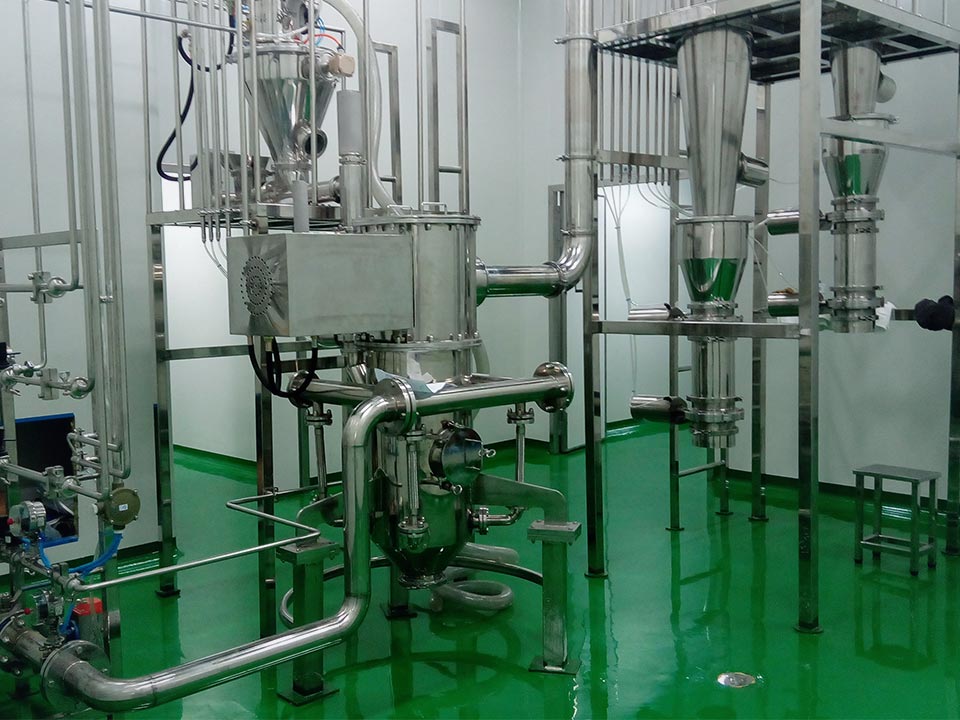Factors affecting performance parameters of jet mill
The factors affecting the performance of jet mill include structural parameters and process parameters. Structural parameters refer to the various parameters of the machine itself, including the nozzle structure and the selection of grading equipment. Process parameters refer to the various parameters that affect the process performance of the equipment due to production operations, including the control of the feed size, the control of the feed rate, the selection of high-pressure working fluid, and the limitation of particle size.

The details are as follows:
1. Feeding particle size control
Most jet mills have a certain upper limit on the feed particle size. Take the fluidized bed jet mill as an example. After the material enters the crushing chamber, it can be fully accelerated before colliding and grinding with other particles. It is difficult for large particles to accelerate completely after entering the crushing chamber, which will make them stay in the machine for too long, resulting in excessive energy consumption. Therefore, in the large-scale production of ultrafine powders, pre-grinding raw materials with too large particle size is an effective way to save energy and reduce consumption.
2. Working medium
At present, the working medium of jet mill is mainly compressed air, superheated steam, inert gas, etc. The choice of working fluid has a certain influence on the grinding effect and economy. Superheated steam is superior to air in terms of fluidity and critical flow rate, and a higher flow rate and uniform flow field can be obtained. However, to use superheated steam as a working fluid, it must be ensured that it is still in a superheated state before entering the product grinding device, otherwise it will cause the material to condense.
3. Feeding speed
The feed rate is an important parameter reflecting the production capacity of jet mills. In the grinding process, choosing the best ratio of the air inlet flow rate to the feed rate is the key to improving the grinding efficiency. Under normal circumstances, under a certain intake air flow condition, the feed rate is directly proportional to the product particle size. However, if the feeding speed is too fast, it will increase the density of particles in the crushing zone and interfere with each other, which is not conducive to the acceleration of the particles, and it is difficult to achieve sufficient and effective collisions between the particles, which affects the crushing efficiency; the feeding speed is too slow, and the particles stay in the crushing zone for time Extending, this will reduce the particle density and reduce the collision rate, resulting in a decrease in production capacity and an increase in energy consumption per unit of output.
4. Granularity limit
During the grinding process of jet mill, as the particle size of the material decreases, the crystal uniformity and strength of the material increase. After reaching a certain level, the particle size of the material no longer decreases or decreases very slowly, that is, the grinding limit of the material is reached. At this time, the specific surface area of the material increases, the surface activity of the particles increases, and the agglomeration and grinding between particles are in a dynamic equilibrium state. Even if the grinding time is prolonged, it is difficult to further reduce the particle size of the material.
